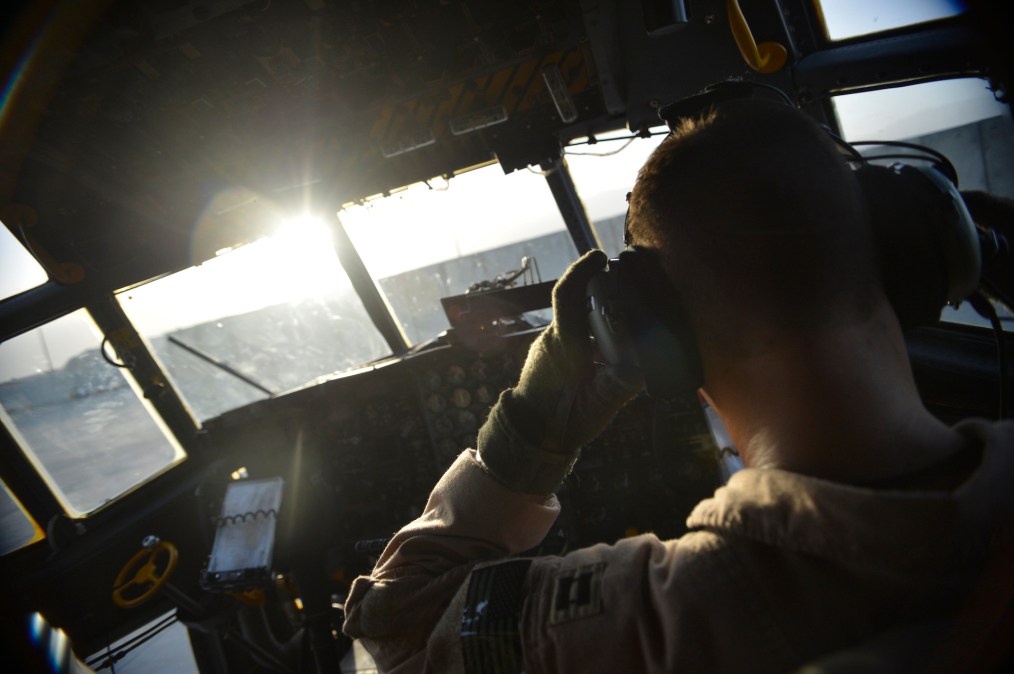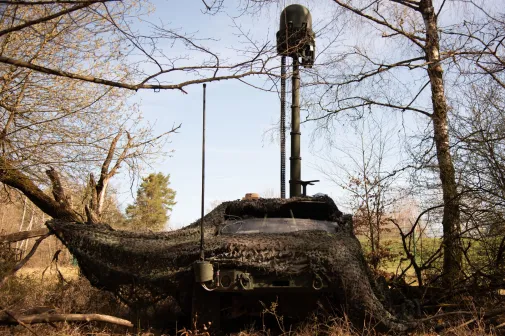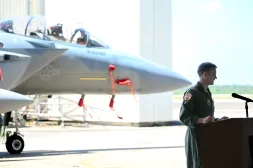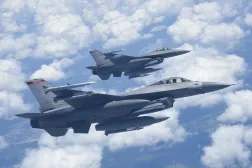Air Force spectrum wing puts skills to the test in first internal exercise

The Air Force’s electromagnetic reprogramming wing recently conducted its first internally focused exercise in an attempt to evaluate how it can perform its essential tasks that will be vital for defeating sophisticated adversaries such as China in a potential conflict.
Rapid Raven 24-1, as the event was called, challenged the 350th Spectrum Warfare Wing for the first time to simulate 24 hours of combat and test the ability to sense and respond to changes in the electromagnetic spectrum and rapidly reprogram mission data files in a wartime environment, focusing on command-and-control elements, according to a release from the wing.
Established in 2021 as a result of the Air Force’s landmark electromagnetic spectrum study to reinvigorate spectrum within the service, the wing has three primary missions: rapid reprogramming, target and waveform development, and assessment of the Air Force’s electronic warfare capabilities.
In the cat-and-mouse game of EW and electromagnetic spectrum operations — where adversaries seek to deny access to the spectrum for communications or navigation through jamming — agility and speed are paramount. Once a signal is detected, forces must work to reprogram systems to counter it, which during the Cold War could take weeks to months as the signal had to be sent back to a lab, a fix devised, and then sent back to the field.
Modern forces are trying to use more digital means to reprogram systems in as near real-time as possible to stay ahead of threats.
“Rapid Raven was able to identify opportunities to go even faster in the future,” Dylan Duplechain, 350th Spectrum Warfare Wing chief engineer, said in the release. “With modern, hardened communication pathways to receive and push data, as well as AI/ML [artificial intelligence/machine learning] tools to assist with decision-making, we can further improve warfighting lethality within our current portfolio.”
The wing’s commander has sought a lofty goal: addressing priority threats is to be able to reprogram capabilities in three hours.
“In order for us to beat China, we have to be able to do our job in less than three hours. It’s an easy thing to say but a harder thing to do. When you start peeling back three hours, what does that actually mean? We addressed that question” during the recent exercise, Col. Josh Koslov, commander of the 350th Spectrum Wing, said. “The Air Force can’t succeed in war if our wing can’t execute its mission essential tasks at the speed of relevance. Rapid Raven wasn’t just an exercise; it was a chance to attack our mission essential tasks as a whole and see what works and what doesn’t.”
The event sought to simulate a 24-hour period of operations that began with receiving an emergency operational change request for updated mission data files based on a new and complex emitter, that triggers the electronic warfare integrated reprogramming cycle across squadrons, according to the Air Force.
Mission data files are the on-board data systems of an aircraft compiling information from the surrounding environment. They’ve been described as “the brains of the airplane.”
Air Force officials have said reprogramming mission data files provides airmen the most up-to-date data — to include threat intelligence — and allows them to sense, identify, locate and counter threats to ultimately increase survivability and lethality.
“We purposely chose threats in multiple bands [frequency range] that should affect most of the systems, requiring reprogramming,” Maj. Joseph Ellis, 350th Spectrum Warfare Wing operations director, said. “It’s about stressing the wing in a combat-representative environment to the point where we’ll learn a lot about our skills to get better and faster.”
Rapid Raven will help inform future tactics, techniques and procedures for the wing and identify requirements needed in order to execute its mission in the rapid timeline officials have outlined to be able to combat top threats.
Given how new the wing is, it continues to utilize various exercises and training venues to game out its objectives, which also involve getting other more traditional units used to these capabilities.
The Air Force, along with the other military services, has sought to reinvigorate spectrum operations as they have grown in strategic importance. Adversaries are aware of the heavy reliance of U.S. and friendly nations’ on spectrum for communications, location information and precision weapons. Following a divestment and reprioritization of these capabilities after the Cold War and during the global war on terror, the U.S. military is forced to bring them back to prominence, meaning traditional forces must be cognizant as well.
“We came to the wing about a year and a half ago and we talked about operationalizing the war fighting mission and war fighting culture,” Koslov said. “It took us a year and a half to build up to what we did this week [at Rapid Raven], and it was awesome. Our Crows really embraced the warfighting culture that we need to beat our adversaries and China.”
In December, the wing participated in the Air Force Weapons School Integration (WSINT) capstone event for the first time, with several large missions involving planning and execution of all aspects of air, space and cyber operations — with joint components — serving as the culmination of what students learn at the school.
The wing is looking to expand Rapid Raven going forward, ramping up its intensity and scope as it looks test the force’s ability to provide electromagnetic spectrum operations capabilities faster and faster.
“Data is our weapon and key to defeating any adversary and that’s what Rapid Raven focused on,” Koslov said. “The ability to receive, manipulate and turn that data into a combat capability that the warfighter can take into battle at the speed of relevance is what will allow us to win.”






